My Home Garden
My current home has a large cul-de-sac lot with a huge backyard that I've turned into a gentleman's farm. Mostly I have lots and lots of flowers, but am also pretty crazy in terms of fruits. One of my student's parents owned Matsuda's Nurseries which were one of the largest suppliers of plants to other nurseries and garden shops in the Sacramento valley region. They got involved in an early personal computer system to do their accounting and that system failed badly with it killing their backups as well. My student begged me to come help. I saved their data by having to move the disc platters into a different drive which pretty much saved their business as everything was on their broken computer. As a thank you they decided to help landscape my current home. The result is a pretty unusual garden and yard for sure.
 Instead of just a few nice trees, my yard contains lots of pretty unusual trees. Let me take you through a virtual tour of the backyard starting with coming in the side gate.
Instead of just a few nice trees, my yard contains lots of pretty unusual trees. Let me take you through a virtual tour of the backyard starting with coming in the side gate.
The first tree is really a huge bush, meaning a pomegranate that stands over twenty feet tall. This is an oriental version where the fruit is extra-large and the seeds are much smaller than a traditional pomegranate. Its large red flowers cover this tree every spring and generate so much noise from all the bees that you would swear this tree would fly away.
 Next is a cherry tree, but of course not a normal cherry. This one looks a little strange because it has a small wasp wasted trunk that splits into four huge branches. Each branch is graft with a different kind of oriental cherry. All are variations of the big black cherries we normally find in supermarkets but their flavors are stronger, tangier, and more interesting.
Next is a cherry tree, but of course not a normal cherry. This one looks a little strange because it has a small wasp wasted trunk that splits into four huge branches. Each branch is graft with a different kind of oriental cherry. All are variations of the big black cherries we normally find in supermarkets but their flavors are stronger, tangier, and more interesting.
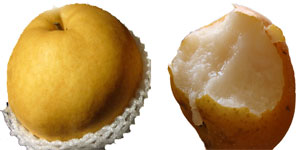 Next are two twin trees that look like apple trees except instead of growing big and squat these are very narrow and tall. Both also are grafts and between them they are self-pollinating and contain five different varieties of Asian pear apples. All tend to be about the height of big apples, but are wider and squatter. The flesh is fairly firm somewhere between an apple and pear, but the flavors are all pear. These fruits make excellent preserves, pies, and are great to just eat right off the tree.
Next are two twin trees that look like apple trees except instead of growing big and squat these are very narrow and tall. Both also are grafts and between them they are self-pollinating and contain five different varieties of Asian pear apples. All tend to be about the height of big apples, but are wider and squatter. The flesh is fairly firm somewhere between an apple and pear, but the flavors are all pear. These fruits make excellent preserves, pies, and are great to just eat right off the tree.
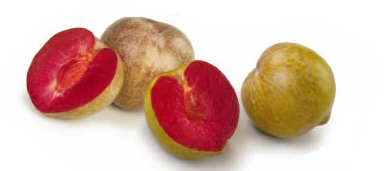 Next is one of my stranger trees, a green oriental plum tree. The tree looks just like a Santa Rosa plum except the tree is pretty small, meaning only about twelve feet tall. What is strangest is it creates normal looking plums that never turn purple. Instead the plum stays a harsh green that looks like it will never get ripe. The only ways to know when the fruit is ripe is either risk taking a bite or waiting until the fruit starts to fall from the tree. One of my professor friends who studies trees said he thinks this tree evolved the green fruit to keep critters from climbing on and breaking branches. Anyhow, when the fruit is ripe if you take a bite the flavor is almost as much of a surprise as the color of the fruit inside. The flesh is a deep almost black maroon and one of the sweetest most tasty plums you ever tried.
Next is one of my stranger trees, a green oriental plum tree. The tree looks just like a Santa Rosa plum except the tree is pretty small, meaning only about twelve feet tall. What is strangest is it creates normal looking plums that never turn purple. Instead the plum stays a harsh green that looks like it will never get ripe. The only ways to know when the fruit is ripe is either risk taking a bite or waiting until the fruit starts to fall from the tree. One of my professor friends who studies trees said he thinks this tree evolved the green fruit to keep critters from climbing on and breaking branches. Anyhow, when the fruit is ripe if you take a bite the flavor is almost as much of a surprise as the color of the fruit inside. The flesh is a deep almost black maroon and one of the sweetest most tasty plums you ever tried.
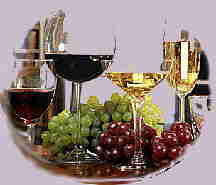 Next is a semi-dwarf cherry tree that puts out normal Bing cherries and it fronts my three grape vines. I grow grapes that can be either used for wine or table grapes. These include the red flame grape, a seedless green grape, and a dark purple grape. With all our wildlife in spite of huge crops there have never been enough left to try making wine and we are lucky if we get a few for the table.
Next is a semi-dwarf cherry tree that puts out normal Bing cherries and it fronts my three grape vines. I grow grapes that can be either used for wine or table grapes. These include the red flame grape, a seedless green grape, and a dark purple grape. With all our wildlife in spite of huge crops there have never been enough left to try making wine and we are lucky if we get a few for the table.
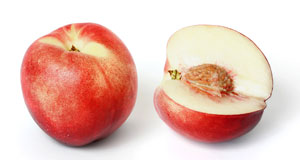 After the cherry tree is my favorite corner. It holds two huge ornamental pear trees that shade a large lavender bush and a full dwarf white nectarine tree. This nectarine tree only stands about three feet high but every year it produces maybe eight or nine full sized nectarines. Each has white instead of yellow flesh without the fuzz found on peaches. This corner is one of my favorites for watching the wild life. The big ornamental pear trees are probably fifty feet tall and produce millions of little dime sized pears. These fruits mostly stay right on the tree then ferment in place then drop. They are a bit bitter for my taste but the animals love them. And oh do we have animals. Not only do we have squirrel, bird and hummingbird feeders, we are a favorite stopping spot for lots of other wildlife. If you go over two neighbor backyards you are in the American river parkway. I've come home to find deer swimming in my pool. On day I found squirrels, a skunk, blue jays, crows, and a possum all sprawled out next to each other in this corner with all so drunk from the fermented pears they can't even stand up. At night we get even more visitors and sometimes wake up to find a whole family of raccoons sleeping off their drunk right next to possums and skunks.
After the cherry tree is my favorite corner. It holds two huge ornamental pear trees that shade a large lavender bush and a full dwarf white nectarine tree. This nectarine tree only stands about three feet high but every year it produces maybe eight or nine full sized nectarines. Each has white instead of yellow flesh without the fuzz found on peaches. This corner is one of my favorites for watching the wild life. The big ornamental pear trees are probably fifty feet tall and produce millions of little dime sized pears. These fruits mostly stay right on the tree then ferment in place then drop. They are a bit bitter for my taste but the animals love them. And oh do we have animals. Not only do we have squirrel, bird and hummingbird feeders, we are a favorite stopping spot for lots of other wildlife. If you go over two neighbor backyards you are in the American river parkway. I've come home to find deer swimming in my pool. On day I found squirrels, a skunk, blue jays, crows, and a possum all sprawled out next to each other in this corner with all so drunk from the fermented pears they can't even stand up. At night we get even more visitors and sometimes wake up to find a whole family of raccoons sleeping off their drunk right next to possums and skunks.
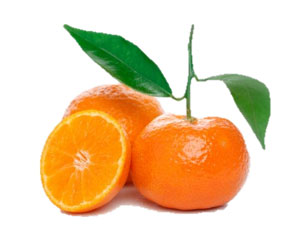 Next to the corner is my dwarf tangerine tree. It also stands about fourteen feet high, but is totally loaded with tangerines every year. Again, this was a Matsuda's tree and is an unusual oriental variety with a little looser skin than traditional tangerines. My parents owned citrus groves in both Florida and Southern California, so I grew up with citrus. Most don't realize that for the best taste we need to let our citrus overwinter meaning it stays on the tree long after it gets ripe. This lets the sugar set and the fruit ends up far sweeter with much more flavor. Eating these tangerines as soon as they turn orange can be a pretty bitter experience, but waiting a bit ends up with nice loose skinned fruit that is very tasty.
Next to the corner is my dwarf tangerine tree. It also stands about fourteen feet high, but is totally loaded with tangerines every year. Again, this was a Matsuda's tree and is an unusual oriental variety with a little looser skin than traditional tangerines. My parents owned citrus groves in both Florida and Southern California, so I grew up with citrus. Most don't realize that for the best taste we need to let our citrus overwinter meaning it stays on the tree long after it gets ripe. This lets the sugar set and the fruit ends up far sweeter with much more flavor. Eating these tangerines as soon as they turn orange can be a pretty bitter experience, but waiting a bit ends up with nice loose skinned fruit that is very tasty.
I also had some ornamental pear trees in that back corner that I used for shade. They grew too big so were replaced by a peach and a nectarine tree. The new trees get covered with flowers every spring and produce lots of fruit. My birds and squirrels will eat the fruit far more green than me, so they usually win that war every year only leaving me a few pieces.
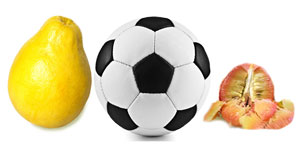 Next is another citrus, this time a full-sized grapefruit, but instead of a normal grapefruit tree it is an oriental pink pumelo grapefruit. These very rare trees also go by at least four other different names, pumelo, pummelo, pommelo, and shaddock. These are a most unusual looking fruit. They are kind of a fat pear shape with yellow bumpy looking skin, but what is most unusual about these fruits is their size. Most grow to as large as a volley or soccer ball. When you open one of these soccer ball sized fruits inside is an exceptionally one two three-inch-thick white albedo (rind pith) surrounding a normal sized grapefruit if peeled. The fruit has more seeds but is far sweeter than a normal grapefruit and very juicy. These also need to over winter to get sweet enough to eat. There is something strange about the skin of these fruits that none of our wildlife visitors like, so unlike most of our fruit that vanishes quickly, these wait patiently for us to pick.
Next is another citrus, this time a full-sized grapefruit, but instead of a normal grapefruit tree it is an oriental pink pumelo grapefruit. These very rare trees also go by at least four other different names, pumelo, pummelo, pommelo, and shaddock. These are a most unusual looking fruit. They are kind of a fat pear shape with yellow bumpy looking skin, but what is most unusual about these fruits is their size. Most grow to as large as a volley or soccer ball. When you open one of these soccer ball sized fruits inside is an exceptionally one two three-inch-thick white albedo (rind pith) surrounding a normal sized grapefruit if peeled. The fruit has more seeds but is far sweeter than a normal grapefruit and very juicy. These also need to over winter to get sweet enough to eat. There is something strange about the skin of these fruits that none of our wildlife visitors like, so unlike most of our fruit that vanishes quickly, these wait patiently for us to pick.
Next I replaced the shade bushes I put in for privacy on the back fence with dwarf peach, apricot, and apple trees which all do well in this area. Our original back yard neighbor was a real pain that only got worse until she was finally kicked out of our neighborhood. I put in some quick growing bushes to shield our two-story home from theirs as they never put in window coverings. Those bushes are now all down and we have wonderful neighbors.
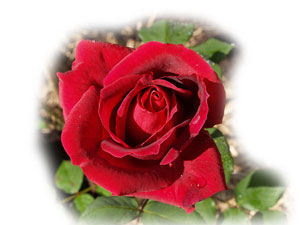
Next is my rose garden. I really like roses and have nine different patented roses from Capitol Nursery. When Capitol closed in late 2012, I was very unhappy as they had been my go-to people for advice and supplies for all my gardening since the late 1960s. My roses include a beautiful yellow with pink orange highlighted peace rose, two different varieties of long-stemmed red roses, a white rose, a lavender rose, a yellow, two flame coloreds, and an orange rose. All were picked for their very pretty flowers and intense smells.
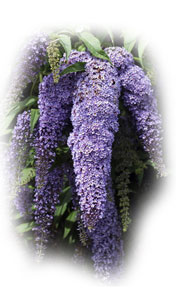 Next is my tree sized butterfly bush that overhangs my pool spa. This bush has long stems of light blue purple blossoms that drive the butterflies wild. There are times of the year when that bush will turn black, white, and yellow depending upon the season just totally covered in butterflies.
Next is my tree sized butterfly bush that overhangs my pool spa. This bush has long stems of light blue purple blossoms that drive the butterflies wild. There are times of the year when that bush will turn black, white, and yellow depending upon the season just totally covered in butterflies.
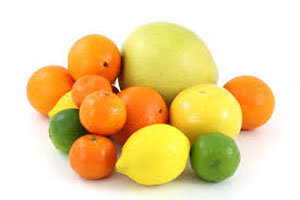 Next are six more dwarf citrus trees behind the pool in the bed against the fence. The first is now a dwarf tangelo tree. Next is an orange tree that stands about eight feet tall and is covered in navel oranges. Next to it is a dwarf Clementine tangerine tree of about the same height. Like my other tangerine tree, it is an exotic Japanese variety. Unlike most Clementine's its fruit has a very tight instead of loose skin. The fruit also needs to over winter to get sweet. Next is a semi dwarf oriental lemon tree. It is about fourteen feet tall and is loaded every year with lemons that look and taste just like Meyer lemons. Next in this group is a full dwarf Mexican lime tree that only stands about four feet tall. It produces the little golf-ball sized thin skinned limes that are so good with a thick margarita. Next to that is a full-sized lime tree that produces larger very sweet limes. Finally, is a dwarf kumquat tree that tends to have fruit on it most of the year.
Next are six more dwarf citrus trees behind the pool in the bed against the fence. The first is now a dwarf tangelo tree. Next is an orange tree that stands about eight feet tall and is covered in navel oranges. Next to it is a dwarf Clementine tangerine tree of about the same height. Like my other tangerine tree, it is an exotic Japanese variety. Unlike most Clementine's its fruit has a very tight instead of loose skin. The fruit also needs to over winter to get sweet. Next is a semi dwarf oriental lemon tree. It is about fourteen feet tall and is loaded every year with lemons that look and taste just like Meyer lemons. Next in this group is a full dwarf Mexican lime tree that only stands about four feet tall. It produces the little golf-ball sized thin skinned limes that are so good with a thick margarita. Next to that is a full-sized lime tree that produces larger very sweet limes. Finally, is a dwarf kumquat tree that tends to have fruit on it most of the year.
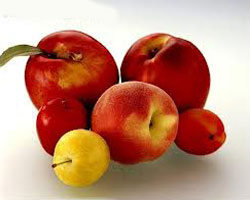 In front of the citrus trees are three more ultra-dwarf trees, a peach, a regular nectarine and an apricot. All are no more than three feet tall and average around ten pieces of full-sized fruit a year. That fruit is so heavy every year I have to get out some notched sticks to hold the fruit heavy branches up so they don't break. Although these ultra-dwarf trees are a nice novelty and little taller than small bushes, they have not held up well. Peach leaf curl is transmitted from spores that sit in the dirt. Any rain splashes these spores onto the trees, so no matter how much I spray and treat these trees every year they all have some problems with the peach leaf curl. The other issue with these is in spite of having these kinds of trees there for over thirty years, they are just not very hearty trees. It seems like we lose and need to replace another about every couple of years. The constant wildlife that likes our yard often breaks off the major branches because these are so easy to climb and their branches so weak. Likewise, our male dogs can spray the whole tree and if they do the tree will drop most if not all its leaves. I recently had to again replace my apricot, and white peach, so only one peach is still an original tree.
In front of the citrus trees are three more ultra-dwarf trees, a peach, a regular nectarine and an apricot. All are no more than three feet tall and average around ten pieces of full-sized fruit a year. That fruit is so heavy every year I have to get out some notched sticks to hold the fruit heavy branches up so they don't break. Although these ultra-dwarf trees are a nice novelty and little taller than small bushes, they have not held up well. Peach leaf curl is transmitted from spores that sit in the dirt. Any rain splashes these spores onto the trees, so no matter how much I spray and treat these trees every year they all have some problems with the peach leaf curl. The other issue with these is in spite of having these kinds of trees there for over thirty years, they are just not very hearty trees. It seems like we lose and need to replace another about every couple of years. The constant wildlife that likes our yard often breaks off the major branches because these are so easy to climb and their branches so weak. Likewise, our male dogs can spray the whole tree and if they do the tree will drop most if not all its leaves. I recently had to again replace my apricot, and white peach, so only one peach is still an original tree.
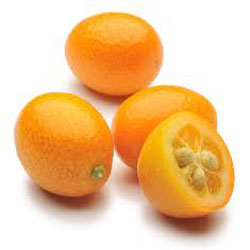 This brings us to the right corner of the backyard when looking out the kitchen bay window across the pool. This corner had a couple of mugo pine trees. These mugo pine trees are natural dwarfs that after twenty-eight years of growing are still not even a full four feet tall. The corner also had two huge ornamental pear trees that got pulled out and replaced with more flowers.
This brings us to the right corner of the backyard when looking out the kitchen bay window across the pool. This corner had a couple of mugo pine trees. These mugo pine trees are natural dwarfs that after twenty-eight years of growing are still not even a full four feet tall. The corner also had two huge ornamental pear trees that got pulled out and replaced with more flowers.
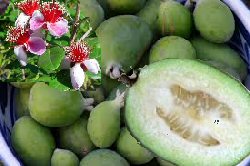 Coming down the fence toward the house are more flowers followed by a pair of huge guava bushes. One is a pineapple and the other a strawberry guava, but since they pollinate each other the fruit from both tastes the same, a strawberry pineapple flavor. The flowers are not only edible, they are considered a delicacy often used to garnish fruit salads. The flowers have a sweet lightly spiced flavor that tastes of just a bit of cinnamon. I had room on that side for more larger trees so started some avocado trees. One appears to have taken nicely, but the other did not make it, so will be starting some more from seeds. I understand these require a male and female tree to reproduce, but I have no clue if the seeds I started are one gender or the other. This is a wait and see how it goes proposition.
Coming down the fence toward the house are more flowers followed by a pair of huge guava bushes. One is a pineapple and the other a strawberry guava, but since they pollinate each other the fruit from both tastes the same, a strawberry pineapple flavor. The flowers are not only edible, they are considered a delicacy often used to garnish fruit salads. The flowers have a sweet lightly spiced flavor that tastes of just a bit of cinnamon. I had room on that side for more larger trees so started some avocado trees. One appears to have taken nicely, but the other did not make it, so will be starting some more from seeds. I understand these require a male and female tree to reproduce, but I have no clue if the seeds I started are one gender or the other. This is a wait and see how it goes proposition.
 Next is a huge Japanese persimmon. This tree loads every year with huge amounts of the squat persimmon fruits, that unlike normal persimmons are sweet from the time they start to turn orange. The fruit sets hard about the same as a fresh apple but the taste is pure persimmon with just a hint of cinnamon. This is a special tree planted for my mother whose favorite fruit was a persimmon. She is no longer with us and instead of taking her a big box of fruit every year our squirrels make sure we don't ever have any extra. They are pretty bad because they like these persimmons so much, they start eating when they are far too green for us.
Next is a huge Japanese persimmon. This tree loads every year with huge amounts of the squat persimmon fruits, that unlike normal persimmons are sweet from the time they start to turn orange. The fruit sets hard about the same as a fresh apple but the taste is pure persimmon with just a hint of cinnamon. This is a special tree planted for my mother whose favorite fruit was a persimmon. She is no longer with us and instead of taking her a big box of fruit every year our squirrels make sure we don't ever have any extra. They are pretty bad because they like these persimmons so much, they start eating when they are far too green for us.
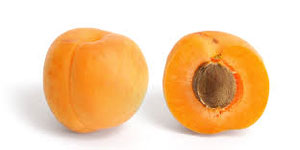 Next is my daughter's new apricot tree. The original which I planted for her right after we had this home built finally surrendered so a couple of years ago. I planted a replacement. This one has the very nice orange pink flesh that is very tender and yet firm. Strangely, the squirrels would much prefer the persimmon so we actually get most of the apricot crop. We bought a fruit drier and every year dry persimmons, pear apples, apricots, cherries, and plums.
Next is my daughter's new apricot tree. The original which I planted for her right after we had this home built finally surrendered so a couple of years ago. I planted a replacement. This one has the very nice orange pink flesh that is very tender and yet firm. Strangely, the squirrels would much prefer the persimmon so we actually get most of the apricot crop. We bought a fruit drier and every year dry persimmons, pear apples, apricots, cherries, and plums.
 Speaking of plums, the next tree is a big plum that has died off and then come back it is a bit of a miracle tree. Every year it is loaded with blossoms and fruit. It gets so heavy with fruit I also have to prop up its branches or knock lots of the green fruit off to keep from losing limbs.
Speaking of plums, the next tree is a big plum that has died off and then come back it is a bit of a miracle tree. Every year it is loaded with blossoms and fruit. It gets so heavy with fruit I also have to prop up its branches or knock lots of the green fruit off to keep from losing limbs.
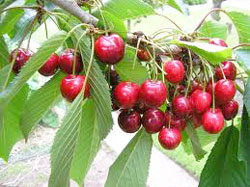 The last three are a big bing cherry that is huge followed by a regular Bartlett pear then a Reiner Cherry. The cherry trees are home to multiple birds' nests including a pretty large colony of humming birds. The pear had a rough year and has not come back well. It is still alive, but just barely, so I suspect it is not much longer for this world.
The last three are a big bing cherry that is huge followed by a regular Bartlett pear then a Reiner Cherry. The cherry trees are home to multiple birds' nests including a pretty large colony of humming birds. The pear had a rough year and has not come back well. It is still alive, but just barely, so I suspect it is not much longer for this world.
Although that covers the outer perimeter, there is still more inside next to the home. Every bit of the home is surrounded by beds with loads of flowers including gardenias, camellias, primrose, poppies, petunias, hydrangeas, and an incredible collection of bulbs. My mother got me started on bulbs in the sixties then I went a little crazy and just for fun bought one of those strange magazine collections of 1000 bulbs which I tucked everywhere. We have every type of tulip and daffodil imaginable, blue star bulbs, giant calla lilies.
 As we continue back around toward the gate, we find my strawberry patch that is full of the sequoia ever bear strawberries. My mother painted a nice picture of my daughter playing in that patch and eating strawberries as quick as she could tuck them into her mouth. They are still one of her favorites. The next bed is just outside the dining room which is my small garden. Although it is a small garden, it does have some tomatoes, squash, radishes, garlic, basil, and other herbs. I also put in another small garden on the other side of the dining room patio slider. This second garden grows my radishes, carrots, garlic, peas, beans, and artichokes.
As we continue back around toward the gate, we find my strawberry patch that is full of the sequoia ever bear strawberries. My mother painted a nice picture of my daughter playing in that patch and eating strawberries as quick as she could tuck them into her mouth. They are still one of her favorites. The next bed is just outside the dining room which is my small garden. Although it is a small garden, it does have some tomatoes, squash, radishes, garlic, basil, and other herbs. I also put in another small garden on the other side of the dining room patio slider. This second garden grows my radishes, carrots, garlic, peas, beans, and artichokes.
After that garden the next bed is full of gardenias and one more ultra-dwarf peach tree. These make for a very sweet smell for a good portion of the year. Next, we have two camellias standing guard over the large covered patio. The patio itself also has a flower bed that is currently full of more strawberries on the left and a miniature rose garden on the right. We have six different varieties of the little roses that don't grow more than a foot high. On the backside of the mini roses is another bed that divides the yard. On one side of the bed is a wrought iron fence and pool and the other a bed with full sized roses and other plants. In front of the side tree beds is a whole row of different colored azaleas. In front of the raised bed in back is a front flower bed with all kinds of annuals and a few perennial flowers to brighten up the day. That block wall that covers the whole back of the property and holds trees is covered by waves of cascading petunias and other flowered ground covers that spill over the brick planter.

